I have developed a bit of a M.O. with the posts I write on buildings on Capitol Hill. Find a building or buildings that pique my interest, find a non-Capitol Hill example to place our neighborhood’s edifice in a broader context, and weave a narrative betwixt the two. After all, as Capitol Hill is the greatest neighborhood around — and there really is no reason to ever leave it — referencing something from the outside is a means to expose readers to the relationship between those other buildings and our and recognize what trend setters we really are. This post will be pushing this formula pretty far, as it is clear that Monticello was built before there was a Capitol Hill (or even a City of Seattle), and that the basis of my admiration for the Glen Arms is its garages — leading to disparate pairing if there ever was one. Critics will rail this tenuous analogy as ‘oh, too academic — too idiosyncratic’ — but you’ve been warned. And you should stop reading now.
 Thomas Jefferson’s Monticello holds a deserved place on the UNESCO World Heritage list of the world’s greatest places. Paired with the University of Virginia campus, they comprise one of only eight cultural (as opposed to natural) sites in the United States, compared to, for example, about 45 in Italy and a similar number in Spain. Rarefied company indeed. But of its many attributes, one has stuck with me for decades and it is not to be found on the back of that nickel in your pocket, and stems from how the lawn (pictured above) is retained by a series of walls (seen on the left of the image), that below-grade create a series of spaces that house stables, workshops, and even a nifty below-grade ice-storage silo (pictured below — noting the location of the railing in both images will help with referencing the images to each other). This alignment between what supports the earth — in this case Monticello’s lawn — with what supported Monticello’s residents — stables for their horses, etc — forms a powerful dialogue between what the 20th Century architect Louis Kahn termed servant and served. It is a simple, yet powerful way of organizing space. In the case of Monticello, the fact that the servant spaces are housed below grade and are also earth retaining brings an even greater depth to this fundamental concept and spatial hierarchy and how even the most basic of spaces provide the realm upon which architecture needs in order to have a meaningful presence.
Thomas Jefferson’s Monticello holds a deserved place on the UNESCO World Heritage list of the world’s greatest places. Paired with the University of Virginia campus, they comprise one of only eight cultural (as opposed to natural) sites in the United States, compared to, for example, about 45 in Italy and a similar number in Spain. Rarefied company indeed. But of its many attributes, one has stuck with me for decades and it is not to be found on the back of that nickel in your pocket, and stems from how the lawn (pictured above) is retained by a series of walls (seen on the left of the image), that below-grade create a series of spaces that house stables, workshops, and even a nifty below-grade ice-storage silo (pictured below — noting the location of the railing in both images will help with referencing the images to each other). This alignment between what supports the earth — in this case Monticello’s lawn — with what supported Monticello’s residents — stables for their horses, etc — forms a powerful dialogue between what the 20th Century architect Louis Kahn termed servant and served. It is a simple, yet powerful way of organizing space. In the case of Monticello, the fact that the servant spaces are housed below grade and are also earth retaining brings an even greater depth to this fundamental concept and spatial hierarchy and how even the most basic of spaces provide the realm upon which architecture needs in order to have a meaningful presence.
On our own ‘little mountain’, the Glen Arms, on Boylston between Republican and Mercer, is one of the many charming apartments on that leafy street. What makes it a standout Capitol building is its Monticello-esque retaining-wall-as-servant-space-holding-up-a-garden design. Sitting on a continuous base of garages (unfortunately too small for most of today’s automobiles — perhaps lease terms stipulating vehicles no larger than a Cinquecento are in order?), the Glen Arms base has a robustness and clarity of form that is extraordinary when compared to other Hill apartments. The rigor of the base, with its crisp platonic openings made of board-formed concrete, forms a uniform datum above which the transition from building to landscape deftly occurs, its servant role functioning equally well at both tasks. And it is this base’s role of both supporting the building and supporting the landscape — while housing uses that support the residents — that proves analogous to the Jeffersonian precedent.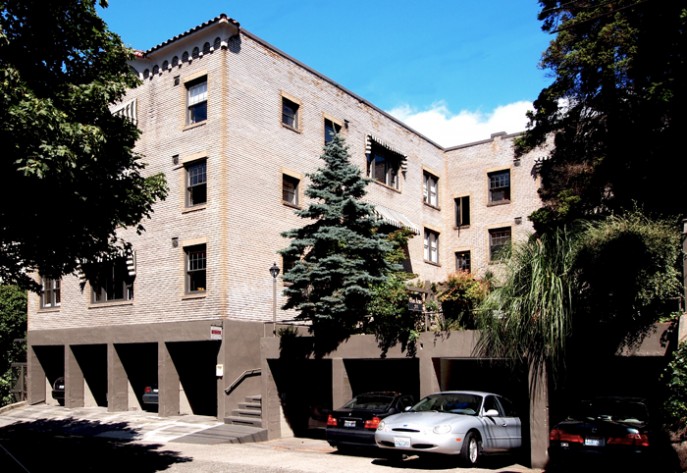
Very well attended to, the apartment’s garden forms a shady and welcome contrast to the staccato of its supporting base. Especially nice is the gardener’s care in allowing the garden to just creep over the edge of the retaining wall-garage, providing welcome visual relief. The same level of stewardship is extended to the building itself, which is plain and cubic, much as its base. Even in their similarity and alignment, the servant-served distinction between the base and top is preserved by the former’s more basic material and terse design. Above the base, buff colored and slightly glazed brick lend a level of quality and dignity that is in no need of further embellishment. Though much of this may seem obvious and hardly worthy of further consideration, that is actually the point, as it imparts a welcome clarity and order. Farther up the building, note the retractable awnings on the largest windows — one of the best passive solar strategies around to keep away the summer sun, and sadly absent from our post air-conditioned world.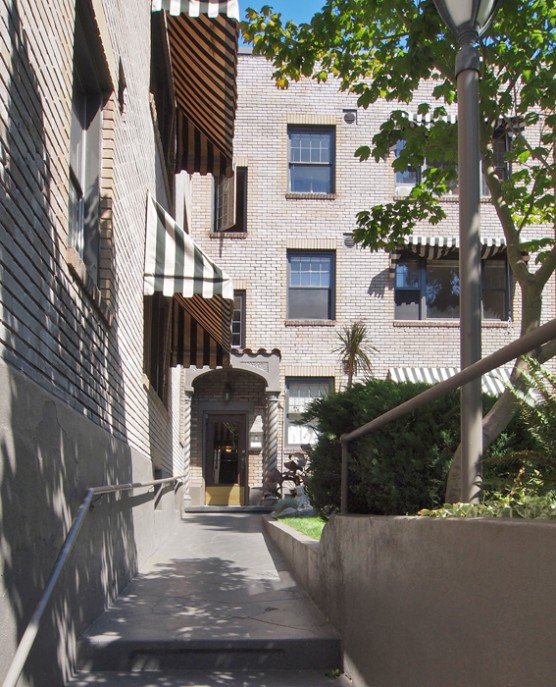
Between matched pairs of four garages each, the entry stair to the Glen Arms is well framed and provides a nice sequence of spaces to the building entry door. Above the entry door is a concrete canopy, which, like the garages rises from the earth to punctuate the Glen Arm’s relationship to the land.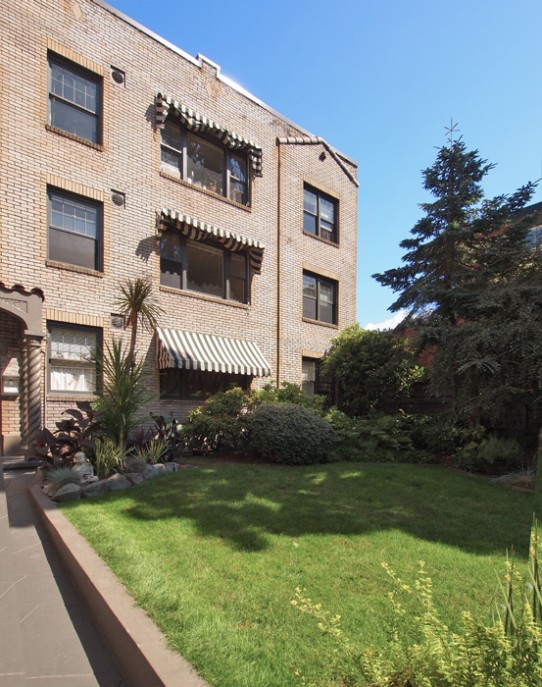
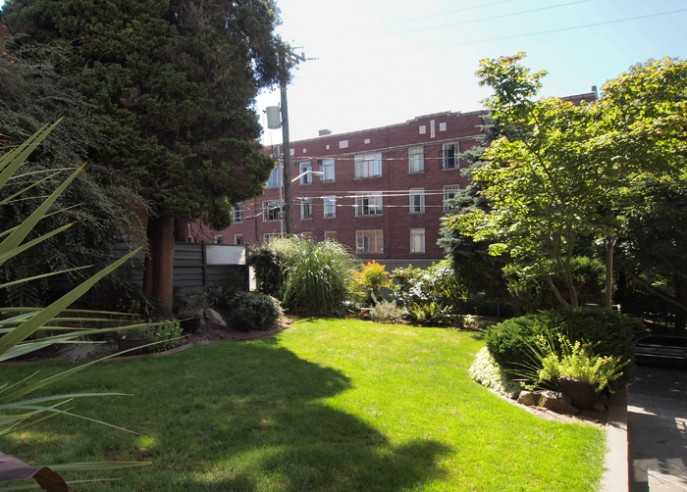 The entry garden must form a great shady relief from the summer’s sun, and an advantageous prospect from which to watch and listen to the happenings along Boylston. Above the din, as it were, courtesy of the wall-garage base that support it.
The entry garden must form a great shady relief from the summer’s sun, and an advantageous prospect from which to watch and listen to the happenings along Boylston. Above the din, as it were, courtesy of the wall-garage base that support it.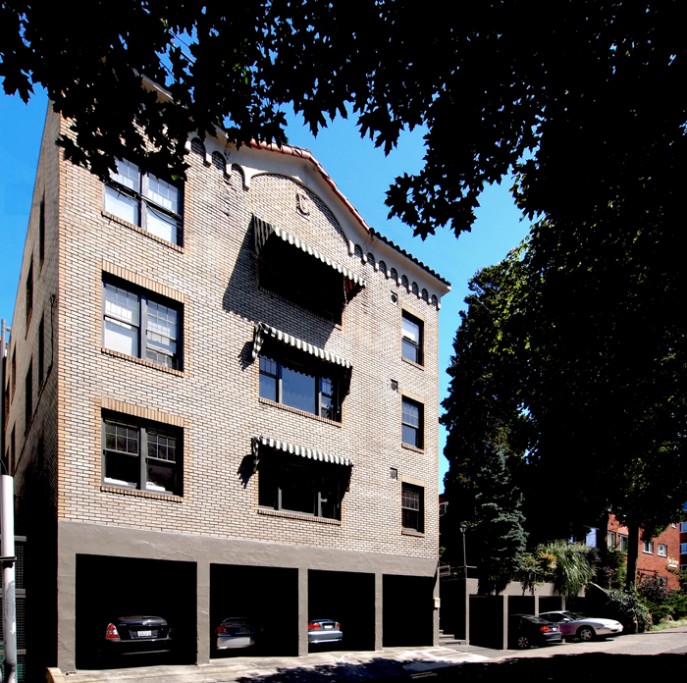
I would like to think, when cars were smaller, that there were wooden garage doors in the openings making the base appropriate for its urban setting. And though continuous parking access along a sidewalk is something one does not normally associate with sound design, in the case of the Glen Arms, it’s the entire composition of garage, landscape, and building, is well executed, proving an exception to the rule.
Recent CHS Schemata Posts
- The subversive origins of the Capitol Hill Craftsman bungalow
- Harrison Modern — Mid-century modern brings Malibu funk to Capitol Hill
- Save Bauhaus? Better save the Pinevue Apartments, too
- The architectural argument for saving Capitol Hill’s Conservatory
- Capitol Hill’s secret alley
- More
John Feit is an architect on Capitol Hill, and works at Schemata Workshop. He blogs frequently on design and urbanism, with a focus on how they relate to and affect the Capitol Hill community.



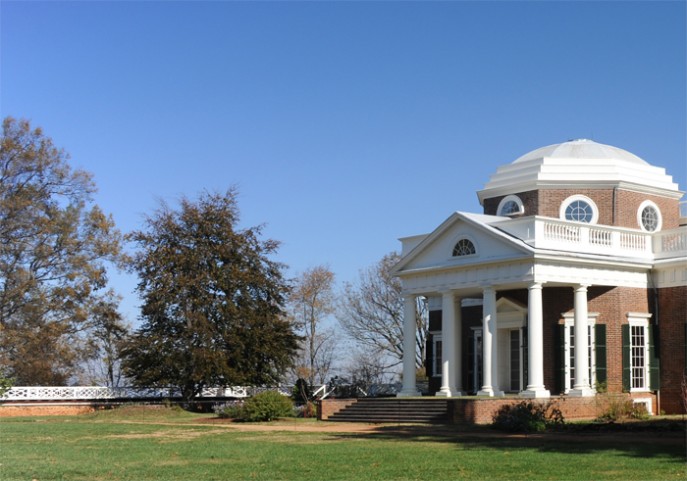

Comparing the Glen Arms to Jeffersons Monticello? Are you crazy? Not even close. Maybe one of the hedged off mansions in north capitol hill…?
Interesting. It’s an old concept, much older than Monticello of course. When was this building built? I’ve been studying the Tuscany Apartments (1926-28) and in its later version (1928) it includes a patio built over a garage with a ramp down from the alley. I live across the street and didn’t even know there was a patio (courtyard) inside! A similar pattern was used by the much later Tate-Mason House, from the same alley, although one can see the patio from the street (Minor) if you look up. I think this parking below concept and green space above concept is pretty frequent in Seattle, at least up until we decided to remove open space altogether from new building plans (as they have done with Coppin’s Well at 1200 Madison).
By the way, it would be nice if someone would proofread your pieces. Like any writer, I make a few typos, but this article had a bit more than a few.
Hey Dotty. Thanks for the note. Made me do a double take and I see we posted this draft without my fixes. Let me know if anything glaring remains!
Thank you for this insightful historic comparison. Far too often, it seems, in new development, costs aside, that a look to the distant past is rejected wholesale. New smaller buildings could benefit from the ‘courtyard above parking’ concept, reserving a space for a Zipcar or similar option. The East Coast hss a rich and varied past with many good ideas still relevant for the 21st century. Thank you for showing that we Seattlites are not “self-satisfied” with our own relatively short architectural heritage and can look elsewhere for inspiration. Your linked ideas, while unlikely, were well-proven.
I look forward to your entries, as you have a keen, observant sensibility and respect for the past.